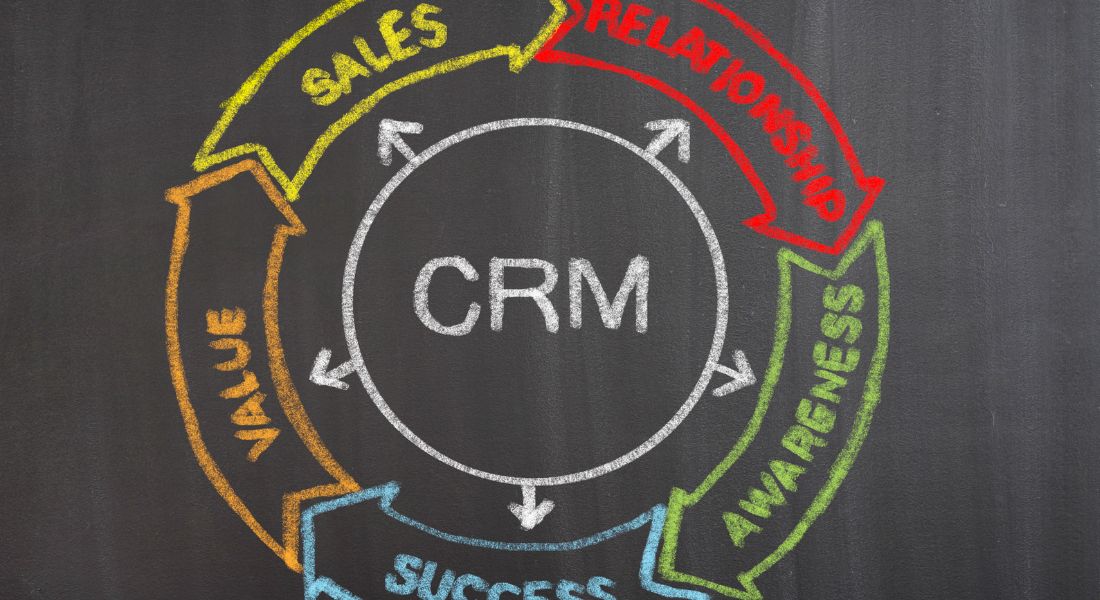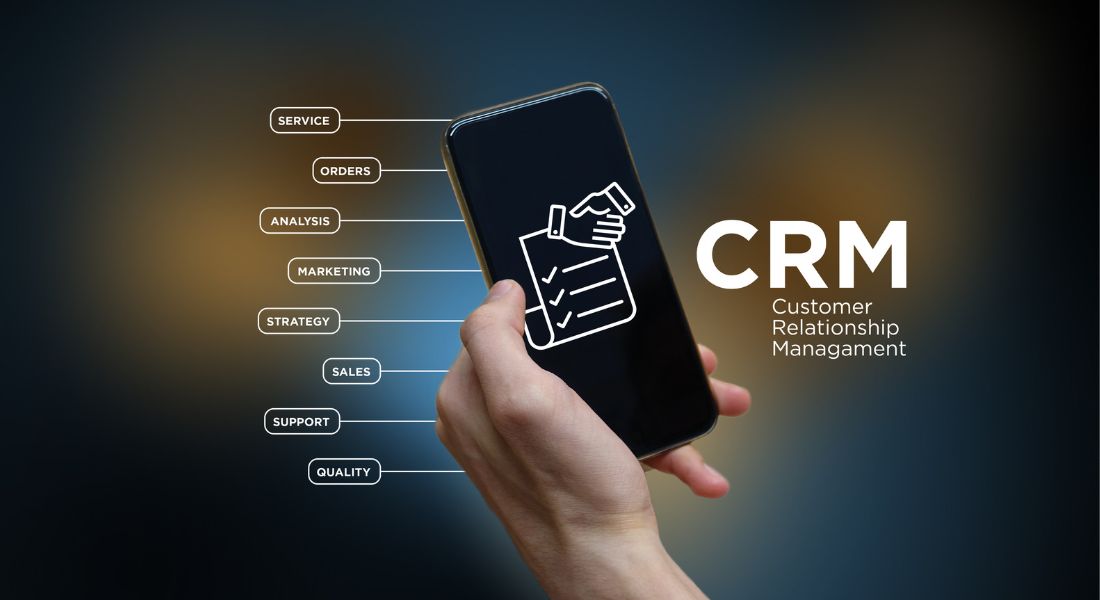If you’re a small business owner looking to get the most out of customer relationships, you know the power of customer relationship management (CRM) software. But what if you’re not quite ready or have the budget to commit to a premium CRM platform? Fear not – this guide will teach you how to build a custom CRM database from the ground up, no coding skills required! We’ll explore the benefits of this DIY approach and show you step-by-step how to create a customised CRM database suited to your business needs for maximum ROI. Unlock the full potential of your CRM data with our simple and effective guide – let’s get started!
Quick Definition
To build your own CRM database, you will need to choose the right software for your system needs and set up your structures accordingly. Most systems require a database administrator to manage the system, so you may want to bring someone in who has experience in CRM database creation.
Post Contents
ToggleBuilding Your Own CRM Database
Building your own CRM database can be a daunting task, but with the right knowledge and resources, you can have a fully functional database up and running in no time. The most important step in this process is understanding what you need to build. This involves identifying the goals of the database, developing a clear implementation roadmap, and creating some basic security measures to keep your data safe.
Once you have identified what you will need to build your CRM database, it is time to start planning how you plan to construct it. You must decide how many tables will be needed and how each table will interact with other tables. Additionally, choosing an appropriate relational database platform such as MySQL or Oracle is important in order to ensure that the data is relevant and easy to use. Finally, it’s also important to consider any external data sources or APIs that your CRM may need access to for reporting or analytics purposes.
While building your own CRM database can offer a great degree of flexibility and control over your customer data, it also involves a great deal of work and technical expertise. Additionally, while do-it-yourself solutions are often considered less expensive than those offered by third-party vendors, the cost associated with manually setting up databases can add up quickly when factoring in related software costs, server hosting expenses, technical support fees, and maintenance fees.
At this point, once you understand the basics of CRM database development and have established what elements are needed in your system, it is time to move on to defining the specific requirements for your business needs. The next section will cover how to do this effectively so that you can create a tailored solution for managing your customer relationships.
- According to research by Software Advice, 87% of businesses report increasing customer retention since introducing a CRM system.
- Dimensional Research found that implementing a CRM could increase sales by almost 29%.
- A study published in 2020 revealed that 91% of businesses use CRMs to store customer data, and 88% of those use the data to personalise their marketing efforts.
Defining Your Requirements
Before you embark on the journey to design and build your own CRM database, it’s important to ensure that you first define your requirements. This step can be crucial in determining how much time and effort you will need to spend upfront in order for the final product to successfully meet its purpose.
When defining your requirements, you will want to focus on the specifics of what you wish to accomplish through building this CRM database. Ask yourself questions such as, “What data do I need?”, “What specific features should the decision support system include?”, and “How can I improve productivity and/or efficiency of workflow with this design?” Asking these types of questions will help guide you when forming a plan of action.
Furthermore, when defining your requirements, keep in mind the end user experience. You want the interface to be intuitive, easy to navigate, and user friendly. Much consideration should also be given to scalability, flexibility, reliability, supportability, speed and capacity needed. These will all play a factor in how easily users will be able to input data into your newly designed system.
Finally, there needs to be a thorough examination of existing resources versus cost analysis before committing to a project like this so that you don’t overspend or make decisions that could harm your business budget. There may be assistance available on other platforms that could help streamline some of the process so those should be taken into account too when defining your requirements.
By taking all factors into consideration during this step in the process, you will have a better understanding of what is required for successful completion of designing and building a custom CRM database. Now that your requirements are defined, we can move onto designing the database in the next section.
Must-Know Points
Before designing and building a CRM database, it is important to first define the specific requirements. This includes data needed, features of the decision support system, user experience, scalability, flexibility, reliability, supportability, speed and capacity needed. Consider existing resources and cost analysis before starting the project to avoid overspending. By gathering all relevant information during this step in the process, you can create a successful CRM database.

Designing the Database
Designing the database is possibly one of the most important steps when creating a CRM system. It is vital that the architect makes decisions that will best suit their customers’ needs and ensure the data gathered is able to be filtered and summarised with ease.
The first decision to make is which type of database to utilise for your CRM platform. There are two main types: relational and non-relational databases. Relational databases use tables that are linked together by shared values such as customer ID, object names or tags and have predetermined relationships between tables. Conversely, non-relational databases store information in a loose “schema” which allows users to collect data quickly however there is no fixed structure and data can become corrupted easily.
Each type of database has its own strengths and weaknesses so it is important to consider all factors before making any decisions on what to use. Another major factor to consider during this step is the size of the database; some companies may need a larger amount of storage than others due to their specific industry or market goals. Additionally, scalability should also be taken into account while designing the database— if the number of records stored in the database increases substantially over time, optimal performance must be maintained.
Finally, with regards to development cost, non-relational databases typically cost more up front than relational databases due to more complex coding requirements; however this cost may often be offset by faster deployment times.
Now that you have an understanding of how to design your database, let’s move onto customising it for your CRM platform by optimising processes like importing data and configuring settings for enhanced usability.
Customising the Database
Customising the database is one of the most important steps in creating your own CRM system. This process allows you to tailor the database to fit your company’s individual needs and preferences. It also ensures that you’re able to capture and store all relevant customer data. Customising the database involves a variety of tasks including selecting the data fields, configuring the tables, and setting up access rights.
When selecting the data fields, it’s important to consider what kind of information is most valuable for your business. Some common pieces of customer data include name, contact information, demographics, purchase history, website activity, and notes or comments. This information should then be configured in related tables so that it can be organised and accessed quickly and easily. Additionally, it is important to ensure that the maximum storage limit for each table is neither too low nor too high—choosing an appropriate limit will help optimise search speed while avoiding unnecessary disc space usage.
The final step in customising the database is setting up access rights. This will enable different users to have different levels of access to the customer data. For instance, some users may only be able to read certain pieces of data while others may have full CRUD (Create/Read/Update/Delete) privileges. Establishing these permission levels can help protect sensitive customer data while allowing various users within the organisation to access it as needed.
Having laid out a comprehensive plan for customising the database, you are now ready to begin adding custom fields. This will allow you to further refine your database and create a tailored experience for customers when interacting with your organisation’s CRM system. In the next section, we will look at how to do this effectively and ensure that your database remains secure and reliable.
Adding Custom Fields
When building your own CRM database, custom fields are one of the most important elements to consider. Custom fields allow you to tailor a database to fit your specific needs and can be used to capture and store additional data that would normally not be included in a pre-built database. Adding custom fields can help you keep track of customer preferences, create more targeted marketing campaigns, and get deeper insights into customer behaviour and trends.
Custom fields may also be beneficial for categorising clients, products, leads, and other entities within your business’s CRM database. By adding custom fields, you can group customers or leads based on criteria such as age, location, or even interests. This will allow you to quickly philtre and segment data into useful groups that can then be used to analyse customer patterns or predict future market demand.
On the other hand, it is also important to consider potential drawbacks when adding custom fields. Custom fields require additional design upfront and require extra resources to maintain their accuracy over time. Too many custom fields may also lead to an overly complex database design which can make it more difficult for users to interact with the system effectively. Additionally, custom field data must be captured before it is added to the database – this adds both extra cost in terms of resources and effort as well as additional time for development.
Overall, adding custom fields can be a great way to customise a CRM database for your specific needs but carefully consider any potential limitations beforehand. With the right approach and implementation strategy, custom fields can help make your CRM database significantly more powerful and impactful.
Now that we have considered potential benefits and drawbacks of adding custom fields let us move onto the next step – development and deployment of a personalised CRM solution tailored specifically to the needs of your business.

Development and Deployment
Once an organisation has made the decision to build its own CRM database, the process of development and deployment must begin. The development phase involves a comprehensive analysis of an organisation’s specific needs, selecting the appropriate software solution, designing the framework for data capture and integration, and integrating existing applications with the new CRM system. Depending on the complexity and size of the system, organisations may need to hire a professional web developer to handle this stage.
Once the software is selected and designed, it will need to be tested to ensure that it meets all requirements. A well-planned testing programme should include both internal staff who can test with various scenarios and potentially outside QA professionals who can offer additional expertise. After testing is completed to satisfaction, the CRM database will be ready for deployment in a production environment.
Successful deployment begins with defining how end users are going to access their personal data and company resources. This information should then be documented in readiness for a plan that denotes when employees must migrate from one system to another or when there will be service outages as part of the deployment process. Communication between departments involved in development and deployment is key, so teams should consider using project management tools such as Slack or Trello similar tools help track progress at each step by keeping stakeholders abreast of any necessary changes.
Developing and deploying a CRM requires patience, expertise, and collaboration across many areas of the business – but when executed efficiently it seamlessly integrates customer information into a powerful tool for success. Moreover, centralised data helps streamline manual processes – saving time, improving efficiency and increasing customer satisfaction.
The next step is to ensure that your new CRM is kept safe and secure with robust Data Management and Security protocols in place.
Data Management and Security
Data management and security are two essential components of any CRM database. Properly managing the data stored in a CRM can enable companies to make informed decisions based on accurate customer trends, which can help improve customer relationships and create further business opportunities. However, with digital information being increasingly targeted by hackers, it is essential that organisations take appropriate measures to protect the data within their CRM databases from potential breaches.
When it comes to data management and security, the key is first understanding what kind of data your CRM holds and the importance of keeping that data private. It is important to understand that different types of data might require different levels of protection, such as Social Security numbers or bank account information that should be encrypted with a secure encryption method. Additionally, organisations should consider restricting access to more sensitive information, instituting strong password policies, and ensuring regular backups of their data. Finally, making sure all software and hardware used by an organisation is up to date with the latest security updates can also help mitigate threats posed by hackers.
At the same time, there are those who would argue that increased protection for CRM databases can come at a cost in terms of convenience for its users. Accessibility limits could make it harder for entities to find the customer insights they need when they need them, or lead to added labour costs dedicated towards robust security protocols. Organisations should weigh these considerations against their own risk tolerance level in order to determine how much security should be allocated for their CRM database operations.
Securing customer data stored within a CRM database is essential for every organisation looking to protect its most important asset—its customer base. As such, now is the time for organisations to reassess their current data management practices and ensure their databases are both secure and accessible. The next section will focus on how organisations can ensure accessibility and secure records management processes.
Ensuring Accessibility and Secure Records Management
When developing your CRM database, it is of utmost importance to prioritise both accessibility and security. This can be done by implementing a strict authorisation protocol and authentication system for access to the data as well as ensuring all records are monitored for any unauthorised modifications.
Authorisation Protocol
It is essential to establish an authorisation protocol that provides different levels of access to the database. Depending on the type of data stored, this could mean allowing only certain personnel within an organisation to view or modify customer information. It’s also important to consider who outside of the organisation has the authority to access any customer records—contractors, shareholders, vendors, etc. The establishment of an effective authorisation protocol ensures that only those with permission are able to view sensitive customer data, while also limiting potential threats from outside sources.
Authentication System
In order to secure customer information within the CRM database, it is important to implement a robust authentication system. This will serve as an additional layer of security since any modification requests will require users to authenticate themselves before gaining access. This authentication system should include measures such as passwords, tokens, biometric scans, or other unique identification processes. Furthermore, redundant authentication protocols should be put into place in order to protect against potential errors or malicious actors attempting to gain unauthorised access.
Monitoring Records
Once the authentication system and authorisation protocol are established, it is important to monitor records of which user accounts accessed or modified any customer data within the database. For example, periodically reviewing logs can help detect any suspicious or unauthorised activities that occur in the system. If any attempts at breaching security protocols are detected then timely action must be taken in order to prevent further damage from occurring and ultimately mitigate risk for future threats.
Protecting customer information is a priority for any organisation; one false move can lead to serious breaches in security that could have long-lasting effects on an organisation’s reputation and credibility. By following these steps for implementing a secure database management system for your CRM initiatives, you can guarantee that your customers’ data will remain safe and secure no matter what changes may occur in the technology landscape over time.

Frequently Asked Questions Explained
What software should I use to build my own CRM database?
The software you should use to build your own CRM database depends on the size, complexity, and features required for your particular project. For beginner projects, open source software such as MySQL is a good option. It has an easy-to-use interface that comes with many powerful features like stored procedures, triggers and views which are essential for creating a basic CRM database.
For more complex projects, you may need to consider using commercial software. Popular options include Microsoft Access or Oracle Database. These offer more advanced functionality such as automated data entry, in-depth analytics and reporting tools, along with strong security features. Additionally, some of these solutions offer user-friendly administrative dashboards which make it easier for you to manage access and other settings quickly and conveniently.
Regardless of what tool you choose, it’s important to take the time to research each option to ensure that the platform you select suits your needs. By doing so, you can optimise the performance of your CRM system and deliver better results for your business.
What are the components of a CRM database that I need to consider before building it?
Before building a CRM database, it is important to consider the following components:
- Data Model: The data model of a CRM database is essential, as it will determine how you organise information and how you run queries. It should include relevant features such as addresses, relationships, payment methods, etc.
- Usability: A CRM database must be easy to use and understand. Consider the user experience when designing your database to ensure that customers are able to access their data quickly and easily.
- Security: Security should be a priority when building your CRM database. Establish strong access controls and encryption protocols so that confidential business information is protected and secure at all times.
- Data Integrity: Ensure that the data in your CRM database is accurate and reliable by regularly running tests for errors, inconsistencies, and delays in data updates.
- Reports: Having an effective reporting system is important for managing customer relationships and making informed decisions about business operations—consider investing in powerful analytics tools to generate useful insights from your CRM data.
What resources should I use to learn how to build a CRM database?
The best resources to use when learning how to build a CRM database are online tutorials and instructional videos. Online tutorials provide step-by-step instructions and visuals that can help guide novice users through the process of creating a CRM database. Instructional videos are also useful because they provide more visual content, which is helpful for understanding some of the more complicated steps during the building process. Additionally, there are several books available that detail the technical information and different approaches to creating a successful CRM database. These books can provide more in-depth guidance and explain concepts from different perspectives. Finally, forums like Reddit and Stack Overflow have answers to commonly asked questions about CRM databases which could be helpful for people just starting out.





